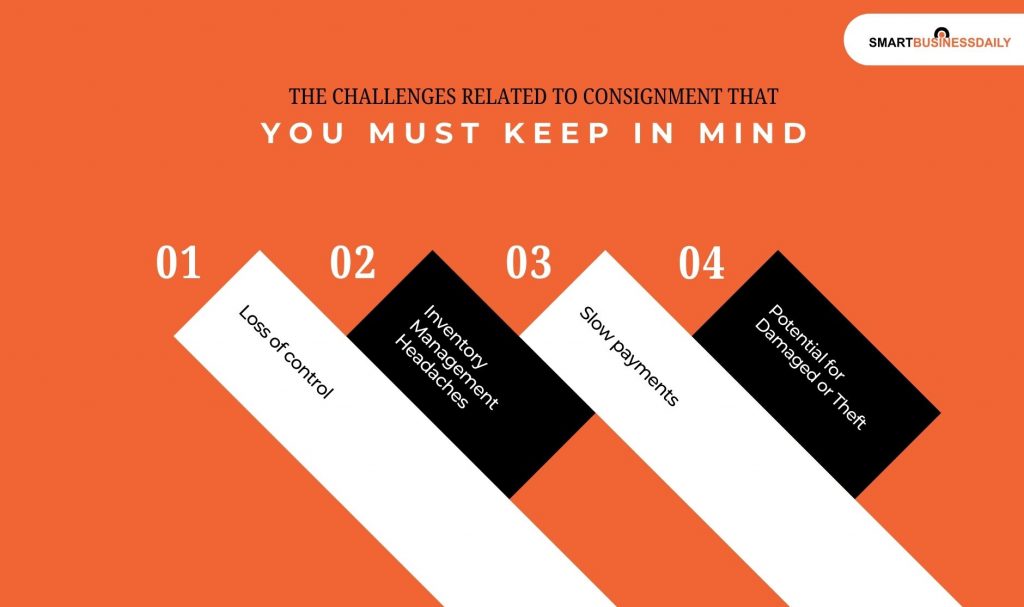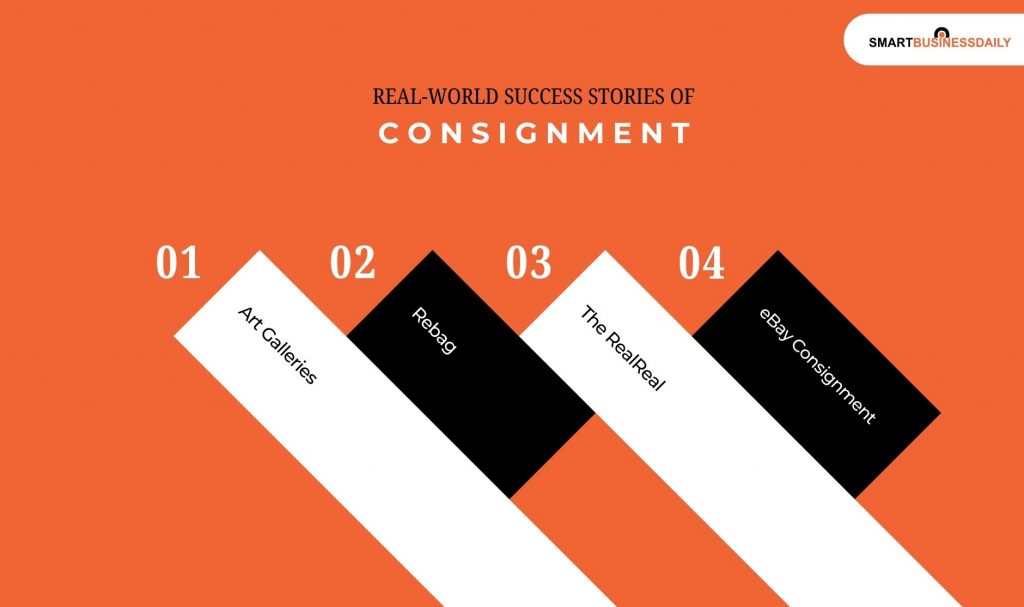Consignment: Sell Your Stuff Without the Hassle (Seriously!)
03 February 2025
7 Mins Read

toc impalement
Ever wondered how some stores can offer a huge variety of unique products without having to buy them all upfront and risk being stuck with leftover inventory? That’s where the consignment comes in! It’s like a fancy word for a “try before you buy” agreement between a store and a seller.
The seller lends their products to the store, and the store displays and sells them on their behalf. The cool part? The seller only gets payment when their items sell.
This arrangement reduces risk for both parties – the store doesn’t have to invest in inventory they might not be able to sell, and the seller gets exposure and a chance to reach new customers without the upfront costs.
Consignment is a win-win for everyone who is in it. Moreover, it’s a great way to discover unique and interesting products while supporting local artists and small businesses. In the blog, we will explore everything about consignments and why it is right for you!
| 📝 Key Takeaway 💡 Definition of consignment and its key aspects 💡 Benefits for consignors (e.g., exposure, revenue) 💡 Benefits for consignees (e.g., inventory without upfront costs) 💡 Common industries and items in consignment |
So, What Is Consignment?

At the core of consignment is a type of outlet to sell without firm ownership. Rather than selling goods outright to a shop or retail channel, the consignor allows the consignee to market and sell the goods on commission, generally receiving payment only upon the sale of the items.
This arrangement is commonly used for:
- Clothing and accessories
- Artwork and antiques
- Furniture
- Electronics
- Specialty items like sports memorabilia or collectibles
The exposure and selling experience are on the consignor’s side, while the consignee gets merchandise without upfront orders. This is mutually satisfying, except it is not without its problems.
Is Consignment the Right Thing For You?

You are thinking about whether consignment is right for you. Let’s take it the easy way.
Consignment is when you sell your things through a shop or platform, and they get paid only when your item sells. It is a nice way of making cash, especially for things you do not want or need. If you aim to clear your closets or donate furniture, it could fit the bill.
So, is it for you? If you are OK to wait a little (dressing for it may take a while for your items to sell), and if you do not mind giving away a certain percentage of the sale price, then consignment is one low-effort way to sell.
It would also work great for those who want to skip the hassle of pricing, haggling, and dealing directly with buyers.
On the other hand, if you need cash now or want every bit of control over the sale process, consignment might not be the way to go. But if you aren’t in a hurry and want to sell your things with as little fuss as possible, why not?
Products That Are Popular In The Consignment World

Consignment is an excellent route for one-of-a-kind secondhand or niche products. Hot consignment product categories include:
- Clothing and shoes.
- Sports equipment and gear.
- Toys and baby supplies.
- Antiques and collectibles.
- Furniture.
- Musical instruments.
- Art.
- Jewellery
The Advantages And Disadvantages Of Consignment

Consignments can be a great way of buying and selling things, but like anything else, they have positives and negatives. Let’s look at the pros and cons so that you can decide whether it is the right option for you or not.
Advantages of Consignment
Less Risk for Sellers: You, as the seller, are relaxed because you need not pay the costs in advance. You cover only a fee charged or divide the profit once your stuff is sold.
Reach a Wider Audience: Consignment stores or online consignment shops usually have loyal customers who ensure that your articles are seen by many more than they usually would be.
Professional Help: Many consignment stores aid not only in the pricing of goods but also in their promotion and demonstration, thus, it helps the sellers to get their products stocked on the site.
Sustainable Shopping: Consignment encloses the entire cycle of recycling and reusing things, hence, it promotes the idea that green goods must be the way it is done by consumers as well as sellers.
Disadvantages of Consignment
Lower Profit Margins: Sharing the sales percentage with the consignment shop may force you to take much less unless you opt to go directly to the buyer.
Items May Not Sell: There’s no way to know for sure if the item will be bought or not which means that you will have to wait a little for the payment.
Fewer Options to Control: After the thing is handed over to the shop, they pretty much decide how they would display, price, promote, or do whatever they want.
Fees and Commissions: Some stores require extra fees for listing or keeping your folders, which causes extra expenses.
In conclusion, consignment can be very good for everybody and the environment if you want to get rid of unnecessary things, make cash, or want to buy green products. Just be sure to weigh the pros and cons before jumping in!
The Payment Structure Of Consignment

For each sold goods for consignments, sellers take merchandise to the agents or consignees. However, the payments aren’t made to the seller until the goods are sold. You can easily do consignment in a simple way:
You, being the consignor person who gives his items put for sale by some other person or an entity. Now, the ownership of such items won’t move to the buyer until all are sold. The retailer’s percentage for his fee has been taken out of the selling price for the buyer. The rest of the money goes to you.
Since it’s one-time-to-never, the store feels dandy since it doesn’t need to go out of pocket to restock its inventory, and it gives the provider little risk since the items are promoted actively. But then repayments take time: It all depends on the volume of sales.
It is profitable for both parties if the percentage commission and payment terms are resolved with the help of an agreement.
What Exactly You Can Consign
You’d be surprised at the variety of things you can consign! Clothing is the most popular, including everything from casual wear to designer pieces. Accessories like handbags, shoes, and jewelry are also great options.
Home goods, such as furniture, décor, and kitchen items, often find a second life through consignment. Electronics, baby gear, and sporting equipment can work if they’re in good shape.
Quality is key – items should be clean, gently used, and in working order. Consigning is a fantastic way to declutter, make extra cash, and give your items a new home. Why not give it a try?
The Challenges Related To Consignment That You Must Keep In Mind

Consignment can seem like a win-win – you get your products out there without upfront costs, and the retailer only pays when they sell.
But there is no such thing as a free lunch. When considering this form of business, these are the problems that you need to keep in mind:
- Loss of control: Essentially, it is getting rid of your products to someone else-there is often a limitation in control over how they are displayed, priced, and marketed.
- Inventory Management Headaches: Utilizing inventory over multiple consignment locations for overseeing it may be almost impossible, as you cannot find real evidence of how much it actually sells and wherever.
- Slow payments: Getting paid on consignment can be slow. You might have to wait weeks or months after a sale.
- Potential for Damaged or Theft: The risk of damage or theft will always linger while the product is in the care of the retailer.
| ⭐ Pro-Tip: Lay out quite clearly all the terms before entering into a spiraling consignment agreement, like pricing, payment, and return policies, so no potential problem can arise. |
Real-World Success Stories Of Consignment

Consigning is not only a hit in industries ranging from art to luxury goods but also has become a regular practice. Here are some examples of businesses that succeed in consignment:
Art Galleries
Art galleries are a typical instance of consignment in existence. Artists (consignors) rely on galleries (consignees) to present their works of art.
Galleries are in charge of sales, marketing, and customer engagement operations, and of course, they are paid a commission per sale. The artist still owns the painting until it’s sold.
Rebag
Rebag has brought innovation to the luxury consignment industry. They’ve introduced some really cool alternatives, like instant payouts, item trades, and a buyback program.
That way, shoppers can return items for credits that can be used for their next shopping—fascinating and easy!
The RealReal
The RealReal is one of the largest online platforms for authenticated luxury goods. They approach consignors to supply the whole range of products from designer clothes and jewelry to home décor.
They are responsible for pricing, arrangements, and selling, meaning the process is stress-free for consignors.
eBay Consignment
Everybody knows eBay as a marketplace for peer-to-peer sales, but they also provide consignment for luxury goods like handbags.
Sellers send their products to eBay, and then after authentication, the website lists them and then ships them. After the sale, the consignor shares the profits.
These businesses sincerely represent the way the consignment model can turn out to be a real victory when it is well done!
Wrapping It Up!
Consignment offers a unique approach to selling and buying goods. You can decide if it fits you by understanding the benefits and drawbacks for both consignors and consignees.
Whether you’re looking to declutter your home or discover unique treasures, exploring the world of consignment can be a rewarding experience.
YOU MAY ALSO LIKE:


















Comments Are Closed For This Article